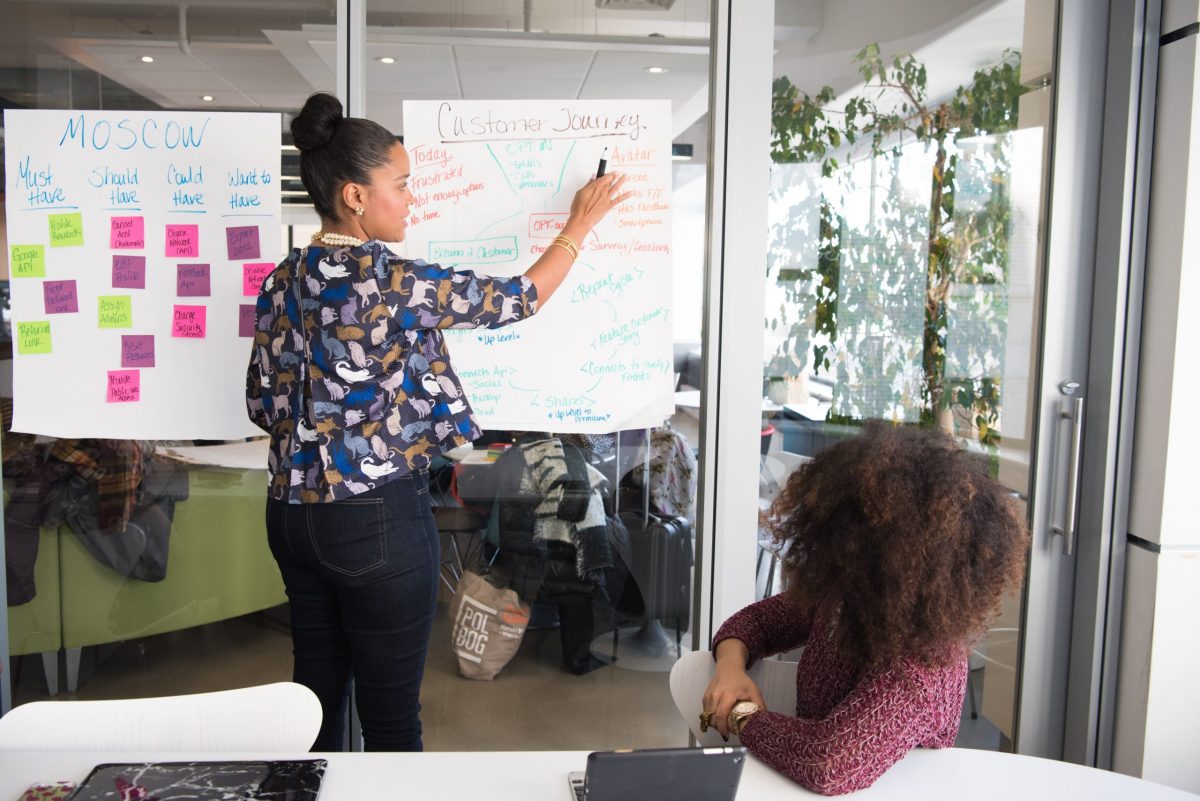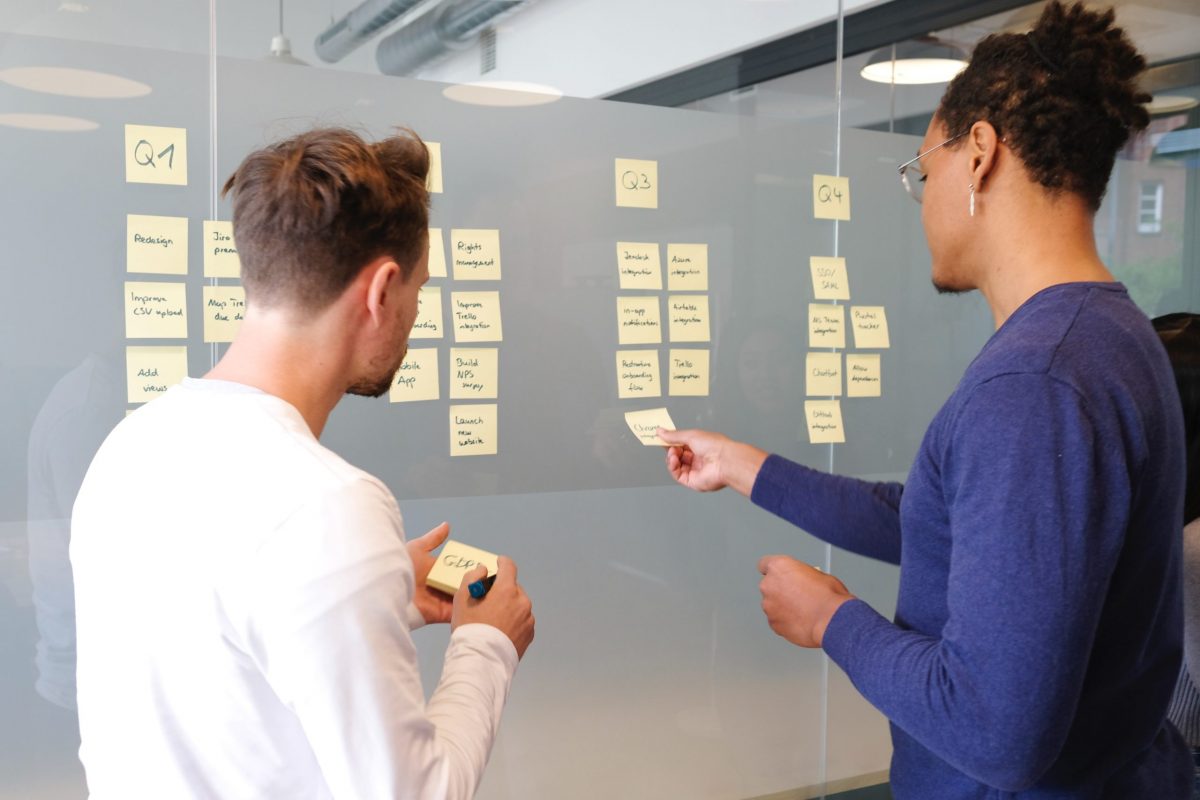In high achievement cultures where people are held accountable for delivering on time and their results, there is generally a misconception about what it takes to lead and inspire others. Leaders often believe they need to “be tough” on others to drive results and get the best out of people. If we watch the way these leaders interact with their teams we can immediately know if they are leading by fear or by love. At Axialent, we find leaders who practice compassionate leadership, rather than an iron fist, are more likely to get the results they want.
The first type of leader is 100% result oriented, very focused on the task and the business results. They have a very strong opinion of what needs to be done to expand and grow. Therefore, they generally need to be “in charge all the time”, often using a very directive approach with their teams. They hand out orders to others, correcting people’s behavior on the spot, sometimes providing destructive feedback. Fear of failure (or not delivering results) is so strong and present that they undermine trust, psychological safety, creativity, and innovation.
Although these types of leadership behaviors may achieve business goals in the short term, leaders need to develop a more integral approach to create exceptional sustainable results. An approach that addresses the human dimension as much as the business one. This is what compassionate leadership is all about.
Compassionate leadership
 Compassionate leadership does not mean being “soft with people” and not holding them accountable. It certainly does not propose giving up business results in pursuit of caring for people or make them feel connected. At the heart of compassionate leadership lies the ability to recognize the potential and need of every human being and help them develop and grow in service of the business needs.
Compassionate leadership does not mean being “soft with people” and not holding them accountable. It certainly does not propose giving up business results in pursuit of caring for people or make them feel connected. At the heart of compassionate leadership lies the ability to recognize the potential and need of every human being and help them develop and grow in service of the business needs.
It means helping people sharpen their edge with kindness in the service of a bigger goal.
Compassionate leaders:
-
Develop a clear and inspiring integral vision.
They strongly provide and thoroughly communicate a clear direction to the desired outcomes and the role teams and individuals are invited to play in achieving the vision.
-
Embrace their own vulnerability and practice self-compassion.
Vulnerability is about showing up and being seen with no control of the outcome (as Brene Brown has stated through her research). Experiencing our own vulnerability and being kind to ourselves is the first step to connecting with others’ vulnerability and feeling compassion.
-
Put themselves in others’ shoes.
They invest time connecting and getting to know their team. These leaders have a genuine interest in them and the challenges they face. They build strong, trusting bonds. Compassionate leaders master the right balance between containing and challenging people to help them get unstuck and carry forward. They understand we all fail and make mistakes, and this is part of our development journey.
-
Speak their truth with honesty and respect.
Compassionate leadership is usually thought of as leaders sugarcoating messages to avoid people getting hurt. They are seen as avoiding conflicts, difficult conversations, or providing any feedback that might challenge people to consider a different perspective. In reality, compassionate leaders do just the opposite. They communicate thoroughly, provide constructive feedback, and have difficult conversations, all in the service of the growth of their people and the business.
-
Are committed to helping people grow and achieve their individual goals.
They will not withhold important feedback that can contribute to others’ development. They’ll own their opinions and express them constructively being true to themselves and being respectful to others.
-
Have a bias for action.
Compassionate leadership is not only about connecting and understanding people’s pain and challenges. It’s also about helping them see what they can and need to do to move forward, overcome adversity, grow their resilience, and encouraging them to do so.
Conclusion
How do you choose to lead your organization? How do you want to be remembered? What do you judge to be the most effective way to deliver your business results?
Compassionate leadership is a matter of choice. It helps create a safe container for people to feel cared for, seen, and valued while being supported to stretch out of their comfort zone and learn what’s needed to excel.


 One of the first outcomes of the leadership team journey described in the
One of the first outcomes of the leadership team journey described in the 




 It is about PROACTIVELY CREATING change in uncertain and disruptive environments. Different from resilience, it is about REACTIVELY RESPONDING to change in a constructive way.
It is about PROACTIVELY CREATING change in uncertain and disruptive environments. Different from resilience, it is about REACTIVELY RESPONDING to change in a constructive way.
 This is precisely how innovation in a corporation works. It is a hard job, with multiple tasks and things to do. You might be working on designing a new solution, defining the precise value proposition, and trying to get the buy-in from different stakeholders. Suddenly, an apparently simple problem is holding things up, and you might feel like it is the end of the world. You feel shame. You question your value, your capabilities, your management skills, or even your work.
This is precisely how innovation in a corporation works. It is a hard job, with multiple tasks and things to do. You might be working on designing a new solution, defining the precise value proposition, and trying to get the buy-in from different stakeholders. Suddenly, an apparently simple problem is holding things up, and you might feel like it is the end of the world. You feel shame. You question your value, your capabilities, your management skills, or even your work.



 The second aspect that made this program different was that it was not designed as the typical immersive, residential, intensive x-day workshop. Instead, we scheduled shorter interventions several weeks apart. This design was deployed before the pandemic, so the sessions were held face-to-face. Nevertheless, this concept has survived to this day as a valid structure for most of our hybrid or purely online leadership development journeys.
The second aspect that made this program different was that it was not designed as the typical immersive, residential, intensive x-day workshop. Instead, we scheduled shorter interventions several weeks apart. This design was deployed before the pandemic, so the sessions were held face-to-face. Nevertheless, this concept has survived to this day as a valid structure for most of our hybrid or purely online leadership development journeys.


